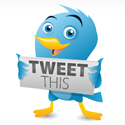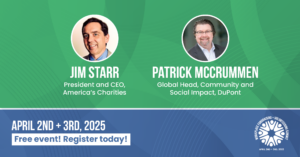Sarah Ford | June 3, 2014
The Relationship Between Innovating and Achieving Transformative Scale
By Bill Shore
During a recent address I gave to social entrepreneurs at Duke University, Professor Joel Fleishman asked me about the dramatic increase over the past few years in the number of students eating subsidized breakfast at school—one of the nation’s most important nutrition programs for low-income children.
Research shows that children who eat a good breakfast tend to perform better in school, have better attendance, and exhibit fewer behavior problems. Unfortunately, many children, especially those from low-income families, do not get breakfast at home. In 1966, the government created the School Breakfast Program to help meet this need, but participation has languished at around 50 percent, leaving more than 11 million low-income children without this free or reduced-cost meal.
Recently, though, the efforts of the coalition of organizations that make up the No Kid Hungry campaign, coordinated by Share Our Strength, achieved significant progress in narrowing this gap. Over the course of just a few years, the campaign’s work increased participation in the School Breakfast Program by approximately two million low-income children. The campaign achieved these dramatic results largely by working with schools to adopt a simple change: moving breakfast from the cafeteria into the classroom.
For almost 50 years, school breakfast was served in the cafeteria before school, which meant kids had to get there early and suffer the stigma of eating a free breakfast. Moving breakfast to the classroom, where kids eat before morning instruction begins, made it universal and logistically manageable. It costs schools almost nothing to make the change—maybe the price of a few carts on wheels. And it more than doubles participation in a program that is 100 percent federally reimbursed.
“Where did the idea of moving breakfast into the classroom originate?” asked Professor Fleishman. I didn’t have the slightest idea. He persisted: “How did you hear of it, and what was your role in helping scale it?”
Implicit in Fleishman’s query was an insightful point: The competency to invent something new and the competency to scale it often reside in very different places, and require different skill sets, ambitions, and teams.
Get Resources and Insights Straight To Your Inbox
Explore More Articles
Workplace Fundraising + Volunteering Summit (April 2nd and 3rd, 2025)
Join us in attending this virtual summit! The America’s Charities team is joining up with other leading voices in the workplace giving space for a…
Read ArticleThe Time to Act is Now
The results of the 2024 National Assessment of Educational Progress (NAEP) are in, and the findings are, in a word, heartbreaking. This assessment serves as…
Read ArticleOpen Position: Non-Profit Account Manager, Employee Assistance Funds & Scholarships (Remote – Full Time)
We are professional, agile, customer-centric and our goal is to inspire employees and organizations to support causes they care about. We help nonprofits fundraise unrestricted,…
Read ArticleGet Resources and Insights Straight To Your Inbox
Receive our monthly/bi-monthly newsletter filled with information about causes, nonprofit impact, and topics important for corporate social responsibility and employee engagement professionals, including disaster response, workplace giving, matching gifts, employee assistance funds, volunteering, scholarship award program management, grantmaking, and other philanthropic initiatives.





